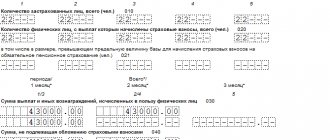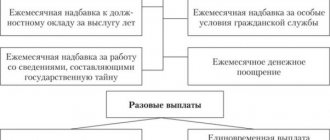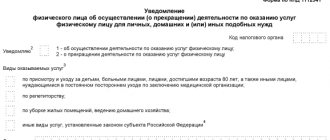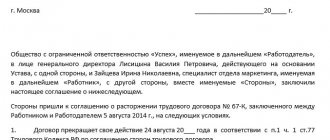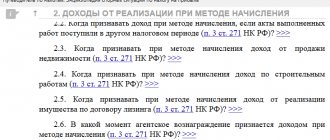Working hours and payments while on watch
Working conditions on a rotational basis are separately identified within the framework of labor relations carried out in remote places or areas with special natural conditions (Article 297 of the Labor Code of the Russian Federation). The mobile type of work is used to cover the shortage of labor resources. The remote nature is recognized when the work is located at a significant distance from the place of residence of the employees or the location of the enterprise.
Employee benefits for rotational work differ from those for traditional shift work. Features of compensation for special conditions:
- The work schedule is permanent, agreed upon by the parties to the contract. A shift is not recognized as time spent on a business trip issued in connection with the fulfillment of a one-time order from the manager.
- Employees on duty outside their place of residence are not entitled to daily payments.
- Employees are not paid field pay or additional payments for the mobile nature of their work.
Instead of amounts compensating for a special labor regime, individuals receive from employers an allowance for working on a shift basis. The bonus is paid in lieu of daily allowance for each calendar day of work, downtime, breaks between shifts and periods of travel.
Calculating the salary of an employee working on a rotational basis in the North
Payroll calculation for an employee working on a rotational basis in the North has its own peculiarities.
Regional coefficients have been established that must be used when calculating wages. So, if in the above example Ivanov I.I. worked in the Far North, in the Khanty-Mansiysk region, then the northern coefficient applied to his salary is 1.7.
In addition, there is also a bonus for working in the North (“northern”). This premium depends not only on the region, but also on the length of service of the employee in the Far North and in equivalent regions.
Let’s assume that Ivanov I.I.’s northern bonus is 50%.
Then the salary of I. I. Ivanov for working on shift in December 2020:
172 × 300 × 1.7 + 172 × 300 × 0.5 = 87,720 + 25,800 = 113,520 rubles.
We add all additional payments and compensations calculated in the example above. The final salary of I. I. Ivanov:
113,520 + 16,100 + 15,600 + 19,200 + 12,000 = 176,420 rub.
To clarify the principle of application of northern surcharges and their sizes, read the article “The size of the northern surcharge in the Far North regions.”
Allowance for special work regime
A shift is understood as a period covering the time of performing remote work and the break between shifts. The duration of the shift period should not exceed more than a month, or, less often, have a duration of no more than 3 months (Article 299 of the Labor Code of the Russian Federation).
Employees are awarded a special bonus for each day of the periods:
- Movements from the assembly point to the watch point.
- Performing work at a remote site, including breaks in accordance with the schedule.
- While on the road from the place of duty to the territorial unit of residence or location of the employer.
- Downtime in work or travel due to weather conditions or the fault of the carrier.
The amount of the bonus depends on the category of complexity or responsibility of the work. One work team may contain positions with different amounts of allowances. For positions with the same responsibilities, additional payments are equal.
| Shift category | Adjusting the amount of premium |
| Federal level | Federal regulations |
| Subjects of the federation | Regional laws and regulations |
| Local level | Municipal orders and acts |
| Entity | Internal documents of the company - collective agreement (adopted in agreement with representatives of the work collective or trade union body), employment contract and other acts |
The minimum or maximum amount of the premium paid by commercial structures is not limited by the rules. When determining the size, employers are guided by the economic feasibility of costs.
| ★ Best-selling book “Accounting from scratch” for dummies (understand how to do accounting in 72 hours) > 8,000 books purchased |
Calculation example
Let us give an example of calculating the shift method of work in construction. P.P. Petrov is employed by the NPO Stroitel. Construction work is being carried out at a distance of 300 km. Standards for 2020:
- working days - 247;
- working hours - 1970.
Schedule for Petrov P.P. for April 2020 - from April 8 to 15 and from April 22 to 29. Service time - 12 hours. In total, Petrov worked 14 shifts of 12 hours each. The day off is Sunday.
Travel days to the collection point (there and back) are April 7 and 16, April 21 and 30, that is, 4 days.
Inter-shift rest is from April 17 to April 20, that is, 4 working days.
Let's calculate the salary of Petrov P.P. for April 2020
This is important to know: Regional wage coefficients
The amount of allowance for watchkeeping conditions
Collective and labor agreement documents establish the amount and conditions for the provision of bonuses (Article 302 of the Labor Code of the Russian Federation). The mandatory condition for establishing the amount of additional payment applies to commercial enterprises. When determining the value, the opinion of the representative body of employees of the enterprise is taken into account. The size of the allowance for budget financing enterprises is determined by legislative acts.
Compensation for expenses during watchkeeping in the form of an allowance is paid only to persons admitted by law to a special labor regime. Restrictions apply to minors, pregnant women, single mothers with young children and persons for whom the climate of the area is contraindicated for health reasons. Payments of allowances to persons with watch-keeping restrictions are illegal. Some features of the calculation of the premium have been established.
| Accrual conditions | Peculiarities |
| Basic value for determining the amount of the premium | The additional payment is provided primarily in the amount of a percentage of wages or salary. Accruals in a fixed amount are made less frequently due to the complexity of accounting |
| Days of the month taken into account for calculating the amount | The total payment amount is calculated not in working days, but in calendar days |
| Requirement to perform duties | The amount of payment does not reflect the fact of work being carried out or its absence during forced downtime |
An example of calculating the amount of the premium. The company has rotation workers on its staff. Internal documents determine the amount of the bonus to be 50% of the salary. Employee M. with a salary of 25,000 rubles in the month of April worked 20 days on a rotation basis, including travel time. When calculating remuneration, the bonus for the shift in April was calculated: N = 25,000 / 30 x 20 x 50% = 8,333.3 rubles.
Payment amount
The bonus for shift work is paid in the amount established by:
- normative act - in cases where the shift is applied in organizations belonging to state (including regional) or municipal property. The level of the act corresponds to the level of the organization: for federal organizations, Government Decree No. 51 of 2005 applies, for regional and municipal organizations - the corresponding acts adopted by local authorities;
- internal rules of the organization - for commercial or non-profit organizations that are not state or municipal.
Typically, the amount of the premium is determined in one of two ways:
- As a percentage of salary or salary.
- In the form of a fixed amount (similar to daily allowances).
As of 2020, the second method of additional payments is used much less frequently. The first can be calculated by taking into account both days and hours, if the enterprise uses an hourly rate.
A clear amount of the bonus is established on a nationwide scale only for employees employed in federal bodies or institutions. According to the above resolution, it is:
- 75% of the salary for the position - for those who work in the Far North or in areas that have equal status;
- 50% – for Siberia or the Far East;
- 30% – if the work takes place in any other region of our country.
Expenses covered by the allowance
The list of reimbursable expenses is stipulated in the internal documents of enterprises. Persons do not have to provide reporting documents to the manager regarding expenses incurred. Costs associated with performing shift duties include:
- The cost of travel to the place of performance of duties and back, to the locality of residence, baggage fees.
- Target fees, commission fees, travel expenses to the station or airport.
- Amounts paid for obtaining a passport, visa, customs fees.
- Expenses for renting a room in a hotel or hostel. The employer is obliged to create rotational camps for employees to live. In the presence of specially equipped places, the cost of renting housing is not compensated.
- Other similar expenses associated with a special labor regime.
Important! The bonus is not considered part of the salary, but is recognized as a compensation payment in accordance with the terms of Art. 164 Labor Code of the Russian Federation.
How to calculate the average salary for a rotational worker during layoffs
Bonuses are awarded to employees based on the bonus regulations in force in the organization. In this case, the bonus is accrued on wages without taking into account payment for days of inter-shift rest. As a rule, employers make compensation payments to shift workers - payment for travel from the place of assembly/place of residence to the place of work and back (tickets) and days of travel (tariff or average daily earnings for days on the road). An enterprise can reimburse the cost of travel, or it can issue tickets to its employees, purchasing them centrally from transport companies. Sometimes large companies organize the transportation of their employees on special flights, ordering airplanes, watercraft, and railway cars. Aspects of payment for travel to employees will be discussed in more detail below.
An analysis of judicial practice on the issue of bringing to responsibility for incorrectly determining the amount of average earnings allows us to conclude that most cases are related to the recovery of lost payment due to a decrease in the amount of average earnings and, if there is sufficient evidence, the courts satisfy these requirements.
For example, the time spent on a business trip (Article 167 of the Labor Code of the Russian Federation);
- time of illness;
- maternity leave time;
- period of leave without pay;
- the time when the employee was provided with additional paid days off to care for disabled children and people with disabilities since childhood;
- the period when the employee did not work due to downtime due to the fault of the organization or for reasons beyond the control of the organization and the employee (for example, due to the suspension of the organization or workshop);
- the time when the employee did not participate in the strike, but due to it could not perform work;
- other periods when the employee did not work for reasons provided for by law.
According to paragraph 13 of the Decree of the Government of the Russian Federation of December 24, 2007 No. 922, which came into force in 2008, “On the specifics of the procedure for calculating average wages” for cases where average earnings are NOT determined for the purpose of paying for vacations and paying compensation for unused vacation (that is, , for example, for cases of remuneration during a business trip), when summarizing working time, the indicator “average hourly earnings” is used.
The shift method of work - its payment differs from all other payment systems for work - is used not only in geological or drilling parties. This method is used in many cases when other methods of organizing labor are ineffective. Let's consider the principles and rules for calculating wages in different situations when using the rotation method.
All working and rest conditions must be clearly stated in the employment agreement, collective agreement, and other legal acts of the organization. In accordance with labor legislation, the following are not allowed to work on a rotational basis:
- pregnant women;
- minors;
- persons for whom a certain climate is harmful for medical reasons;
- women with children under 3 years of age.
Thus, an incorrect procedure for paying for overtime days can lead to an unreasonable increase in average earnings. However, since this does not violate the rights of workers, any liability cannot follow in this case.
Withholding of personal income tax from the amounts of the bonus received
The Ministry of Finance clarified the procedure for taxation of payments to rotational workers in letter No. 03-04-05/7999 dated 02/09/2020.
According to the explanations of specialists from the Ministry of Finance, bonus payments to shift workers are recognized as compensation provided for special working conditions. Amounts are exempt from income tax on the basis of the provisions of paragraph 3 of Art. 217 Tax Code of the Russian Federation. To apply the exemption, you must have the following grounds:
- Non-taxable amounts for commercial enterprises must be established by regulations or internal documents of the enterprise. The amounts are confirmed by the representative or trade union body of the employees.
- Payments to rotational workers from state funding are established by budget standards at the appropriate level.
Employers use the allowance to cover expenses, but must not make payments beyond the cap. According to experts from the Ministry of Finance, the amount of the bonus should be comparable to the expenses of employees during the shift period
Deputy Director of the Department V.A. Prokaev (letter dated July 13, 2020 No. 03-04-06/49149).
A significant excess of the amount over costs may lead to additional attention to the accounting of the enterprise and the adoption of a decision by the inspectors of the Federal Tax Service on additional assessment of income tax.
Nuances of calculating “shift” amounts
Employees must be familiarized with the schedule no later than two months before starting work. The document must be approved by the trade union of the employing organization. When drawing up a schedule, you should keep in mind that working without a rest break, in two shifts in a row, is strictly prohibited. Shift workers are granted annual leave after they have used all the days of inter-shift rest (clause 7.1 of the Regulations). Therefore, it must fall on the work shift.
Involvement in overtime work in other cases is a violation of the Labor Code. After all, a shift on watch usually lasts from 10 to 12 hours. Overtime is paid according to the general rules - based on the results of the accounting period (since the summary accounting of working hours is used on the shift): the first 2 hours are paid at least one and a half times, and subsequent hours - at double. Hours worked overtime on a shift do not need to be taken into account when determining the duration of inter-shift rest. The movement of workers to another area using a rotational method of organizing work is not considered a transfer to another place of work.
In practice, questions often arise as to whether shift workers can be involved in overtime work, how it is paid and whether it is taken into account when determining the duration of rest between shifts. This is what the Russian Ministry of Health and Social Development explained to us.
This is important to know: minimum wage in the Chechen Republic 2020 (by economic sector)
Due to the specifics of such a schedule, the internal labor regulations of enterprises introduce summarized recording of working time. The accounting period can be from one month to a year.
If this clause is not separately stated in the employment contract with the employee, then the employer is not obliged to pay for travel. The person quit - he ceased to be an employee of the enterprise, and the employer’s obligations to him ceased from the moment of his dismissal.
Taxation of premiums on insurance premiums
Benefits paid to employees are subject to insurance premiums. The exception is the amount of compensation in the form of bonuses provided to rotational workers. Tax-exempt payments are made upon reimbursement of expenses arising in connection with the performance of labor duties (clause 2 of Article 422 of the Tax Code of the Russian Federation).
The amounts provided to individuals to compensate for expenses and listed in clause 3 of Art. 217 Tax Code of the Russian Federation. The condition for tax exemption is the determination of the amount of payment in contracts or other internal documents of the enterprise.
We calculate payment for inter-shift rest days
Such days are provided to shift workers for overtime during the shift period. After all, as a rule, their working day is longer than the standard eight-hour day and they work a six-day shift. 301 Labor Code of the Russian Federation. Consequently, work for each week on shift significantly exceeds the standard working hours for a week according to the production calendar. For each day of inter-shift rest, the employee must be paid one daily tariff rate or a daily part of the salary, unless a higher amount of payment is established by local regulations (for example, regulations on the rotation method), a collective or labor agreement. 3 tbsp. 301 Labor Code of the Russian Federation. For information on how to calculate the number of days of inter-shift rest, read on p. 54 of this number.
The amount of payment for inter-shift rest days per month is calculated as follows:
Using formula (8), the amount of payment for inter-shift rest days per month can be calculated for workers who have a daily tariff rate.
The procedure for calculating the daily tariff rate based on the hourly tariff rate or salary has not been established. Its size can be determined as follows:
- <if>the employee has an hourly wage rate:
- <if>the employee has a salary (monthly tariff rate):
OPTION 1. Taking into account the average monthly number of working days per year:
OPTION 2. Taking into account the norm of working days of a particular month according to the production calendar:
To avoid uneven payment for inter-shift rest days by month due to fluctuations in the norm of working days in different months, it is better to calculate salaries for salaried employees taking into account the average monthly number of working days for the year (option 1).
Mistakes made when taxing allowances
Error No. 1. The amount of the bonus constitutes a significant part of the payments to rotational workers. The position of adding bonuses to wages with the inclusion of amounts in the composition of average earnings is erroneous. Compensation for expenses for the conditions of watchkeeping is compensation and is not taken into account when calculating bulletins, vacation pay and other payments based on average earnings.
Mistake No. 2. Employers have the right to hire persons with foreign citizenship. When concluding a contract for work under shift conditions, it is necessary to take into account the requirements for the location of persons. Temporarily staying or residing foreigners have the right to work in the region where the patent, permit or other document was issued. The restriction does not apply to the performance of an official assignment as part of a business trip of a foreign national.
Exceptions are highly qualified specialists who have the right to work in several documented regions, and citizens of the EAEU who work legally without obtaining a permit.
Nuances of calculating “shift” amounts
As a rule, engineers and blue-collar workers are in demand in construction, mining and similar industries, in hard-to-reach, climatically difficult regions. The calculation of amounts due to employees has a number of features and pitfalls that must be taken into account.
This is important to know: Regulations on remuneration and bonuses for municipal unitary enterprises, private security companies and LLCs: example and sample 2020
In particular, having eliminated violations in the decisions of the lower courts regarding the incorrect calculation of the number of days in the accounting period, the court satisfied the claims and recovered the unpaid amounts of arrears for the payment of severance pay.
Employees who work on a rotational basis have a special schedule of work and rest days. For example, it could be 15 days of work - 15 days of rest, 4 weeks of work - 4 weeks of rest, etc. The collective and/or labor agreement may also provide for other guarantees, such as the provision of free food during shifts.
For the purposes of calculating vacation pay and compensation for unused vacation for payments to employees working under the conditions of summarized recording of working hours, the general procedure for calculating the average is applied. The rotation method is a special way of organizing work that involves working outside the place of permanent residence. Employees working on a rotational basis cannot return home every day due to the remoteness of the workplace, and the employer is obliged to comply with a number of legal requirements and standards, providing the “shift workers” with proper working conditions and payment. One of these obligations is the payment of a special salary supplement in accordance with the provisions of Article 302 of the Labor Code of the Russian Federation.
Sending an employee on a shift is not a business trip. His movement due to production needs from one facility to another within the administrative district does not constitute a transfer to another job and does not require his consent. Here are the main differences between a business trip and a rotational work method in accordance with current legislation.
Answers to common questions
Question No. 1. Are northern coefficients taken into account when calculating the premium?
The northern coefficient is not calculated on the amount of the watchkeeping allowance. The increasing factor is applied separately from the amount of additional compensation.
Question No. 2. Can an employer apply a rotational labor method to a group of people, a team, or has the right to draw up an agreement with one person?
The legislation does not establish a requirement to create a team to apply a rotational work method. Sending one specialist to work on a shift basis is not considered a business trip. A remote work agreement can be concluded with one employee.
Who is not entitled to a supplement?
In order for a bonus to be paid for a rotational work method, it is necessary that the employee be allowed to work using this method.
The law clearly states that some workers cannot be involved in this type of work. Restrictions apply:
- Minors.
- Pregnant women.
- Women who have children under three years of age. At the same time, the law does not provide for such restrictions for men, and even single fathers.
- Workers for whom this type of work or stay in a particular area is not recommended for medical reasons. That is why, before involving an employee on a shift, he must undergo a medical examination.
Questions about who exactly is allowed on shift should be resolved at least 2 months before departure. The schedule is approved and communicated to all employees whom it concerns, against signature.
Inter-shift rest
The shift method of work involves overtime, in comparison with the legally established norms of work and rest time. Days of rest between shifts are provided to cover this gap and compensate the employee for the costs of his labor. This period is paid based on one tariff rate (daily wage based on salary). Higher calculated indicators enshrined in the local regulations of the organization are also acceptable. The tariff rate is multiplied by the number of days of rest.
Attention! To calculate the number of days of rest between shifts, the actual number of hours worked according to the schedule should be compared with the standard according to the production calendar of a 40-hour working week (if there are harmful working conditions - a 36-hour working week). The positive difference is divided by the standard length of the working day of the corresponding working week - 8 or 7 hours. 12 min.
Travel days are calculated by the employer based on the number of travel days and the daily tariff rate, multiplying the two values.
Travel reimbursement
Shift work involves travel from the place where the employee lives to the place where he works. In this case, this path is divided into two parts:
- From the place of residence to the place where the employer is located, or to another collection point established by him.
- From the point where personnel gather for a shift to the place of work.
The costs of the second part are borne by the employer, and the employee receives a shift bonus for it. But what about the first part?
Previously, Soviet labor law provided that shift workers were paid all the way from the place where they live to the rotation camp - and back. However, later in Russian legislation this condition was canceled. Now the employee must travel to the collection point at his own expense. However, the law does not establish a direct prohibition on paying him sums for travel - and therefore some organizations that have the financial ability to do this pay these sums as well.
Calculating the amount of overtime pay
A shift lasts, as a rule, 10-12 hours. However, this is not considered overtime work, since it is compensated by the provision of days of rest between shifts. But if workers were left to work at the end of the shift due to the non-arrival of shift personnel, then based on the results of the accounting period (since the shift method uses summarized accounting of working hours), such overtime can be recognized as overtime work, Articles 152, 300 of the Labor Code of the Russian Federation; clause 5.5 of the Basic Provisions, approved. Resolution of the State Committee for Labor of the USSR, the Secretariat of the All-Union Central Council of Trade Unions, the Ministry of Health of the USSR dated December 31, 1987 No. 794/33-82. Overtime work is compensated. 152 Labor Code of the Russian Federation; Decision of the Supreme Court dated October 15, 2012 No. AKPI12-1068:
- <or>increased pay:
- for the first 2 hours of work, falling on average on each working day of the accounting period - no less than one and a half times the hourly wage rate or the hourly part of the salary for each hour;
- for other hours of overtime work - double the hourly wage rate or the hourly portion of the salary for each hour;
- <or>additional rest time - no less than the time worked overtime.
If the employee’s work is paid on the basis of a daily tariff rate or salary, then the hourly tariff rate is calculated as follows:
- <if>the employee has a daily wage rate:
- If the employee has a fixed salary, the hourly part of the salary is calculated using formula (3) or (4).
The calculation of the hourly portion according to the formula (3) Letter of the Ministry of Health dated July 2, 2014 No. 16-4/2059436 allows the salary worker to be paid evenly for overtime hours, regardless of the fluctuation in the standard working hours by month.
Example. Salary calculation for a shift worker
/ condition / At LLC Transit, work at remote sites is carried out on a rotational basis. The accounting period is 1 year.
Work schedule in April 2020 for I.A. Kovalev established:
- for the period from April 4 to April 23, 2020 - 18 shifts of 10 hours;
- day off on shift - Sunday;
- travel days - April 3 and 24 (2 days);
- days of inter-shift rest - April 1 and from April 25 to 29 (6 days).
The number of calendar days of watch is 20 calendar days.
The standard working hours for 2020 is 1974 hours.
The standard working days in 2020 is 247 working days.
The employee's salary is 40,000 rubles. per month.
The amount of the bonus in lieu of daily allowance is set at 30% of the salary.
/ solution / To calculate the salary of I.A. Kovalev for April we use the following algorithm.
STEP 1. We calculate the salary for the time worked on shift using formula (3):
40,000 rub. x 12 months / 1974 hours x 10 hours x 18 shifts = 43,769 rubles.
STEP 2. Calculate the amount of the allowance instead of the daily allowance using formula (7):
40,000 rub. / 30 days x (20 days + 2 days) x 30% = 8800 rub.
STEP 3. We calculate the additional payment for days of inter-shift rest.
We determine the employee’s daily rate using formula (10):
40,000 rub. x 12 months / 247 workers days = 1943.32 rubles/day.
We determine the amount of payment for inter-shift rest days falling in April using formula (8):
RUB 1,943.32/day x 6 days = 11,659.92 rub.
STEP 4. Calculate the amount of additional payment for the days of travel using formula (12):
RUB 1,943.32/day x 2 days = 3886.64 rub.
STEP 5. Determine the amount of payments to the employee for April 2020:
RUB 43,769 + 8800 rub. + 11,659.92 rub. + 3886.64 rub. = 68,115.56 rub.

